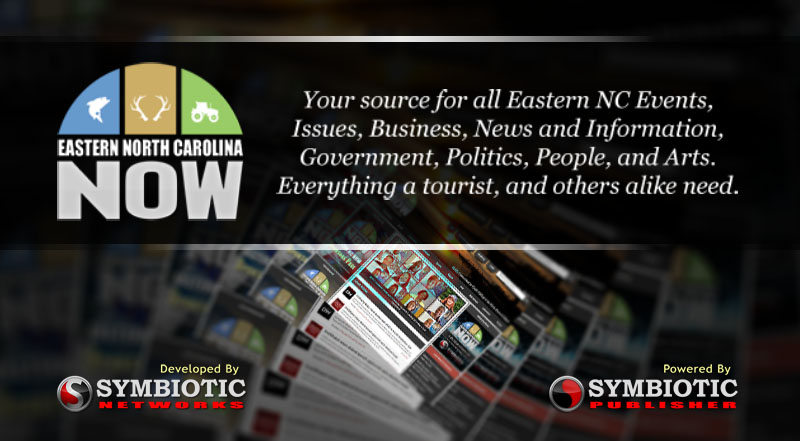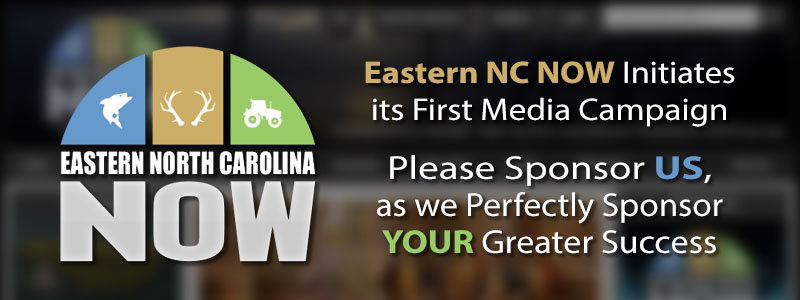Committed to the First Amendment and OUR Freedom of Speech since 2008
Press Briefing by White House COVID-19 Response Team and Public Health Officials
Press Release:
Via Teleconference • Washington D.C. • April 19 • 10:33 A.M. EDT
ACTING ADMINISTRATOR SLAVITT: Good morning, and thank you for joining us. I am joined by Dr. Walensky from the CDC and Dr. Fauci from the NIH today. I want to tell you today that things are about to get a whole lot easier.
When we arrived in January, many Americans were understandably frustrated with the pace of the vaccination program and the sea of challenges: not enough vaccines, few places to get vaccinated, a shortage of vaccinators, and confusing rules on who qualified in every state, Tribe, and territory.
We got to work, around the clock, deploying the whole-of-government approach — from the FEMA personnel who are getting shots in arms in communities across the country, to the men and women in the armed forces who are overseeing the shipment and delivery of the vaccines, to the scientists and clinicians at FDA, CDC, and NIH who have ensured the safety of these vaccines.
As a result, our vaccination program is now humming and it's even accelerating. Over 80 percent of seniors have had at least their first shot, up from 8 percent. And now, 50 percent of adults in the U.S. have had at least one shot, up from 5 percent.
And we now have one thing on our mind: making sure the other 50 percent know how easy it is to get a shot. So, if you still think it's too difficult to get your vaccine, here's what you need to know: The lack of supply, the shortage of locations, the confusing rules are all in the past. That cannot be said enough.
Thanks to the aggressive action taken by many, and the collaboration of so many people across the country, there are now thousands of more people ready to help get you vaccinated. There are now millions more vaccine doses available and waiting. And there are now more than 60,000 safe and convenient places for you to go get your shot.
Every one who you've seen finally able to safely hug a loved one, to visit each other without masks, to see old friends, that's an opportunity that's now within reach for you if you make your appointment.
If you're 16 or over, it is your turn to get vaccinated, no matter where you live. And now there's now a 9 out of 10 chance that you are located within 5 miles of your vaccine shot.
And for those of you who have people in your lives who can't get to a vaccine site, we are helping community-based organizations connect vulnerable Americans with shots. And to get resources to healthcare providers serving at-risk populations and to promote equitable distribution of vaccines, today, HHS is making $150 million available to community-based healthcare providers to strengthen their efforts to get shots in arms and care for patients with COVID-19.
I want to conclude my remarks by offering great thanks. This vaccination program will be what brings us out of the pandemic. And thanks to the President's whole-of-government, wartime response, today is an important day in the entire scope of the pandemic.
Thanks to the scientists who have spent more than 20 years researching and developing the technology that led to these vaccines; to the warehouse workers and truck drivers getting vaccine doses to every corner of the country — to the local pharmacies, health centers, medical centers, faith-based organizations, and many more ensuring vaccine access in their communities; and to the healthcare workers who are putting the shots in arms — thanks to all of them, it has never been easier to get a shot.
Join the more than 130 million Americans who have already gotten at least one shot — half of one — half of all adults. That's a lot of progress, but as we said from the start, winning this war against COVID-19 takes all of us doing our part.
So, here's my direct plea to everyone listening: If you haven't already made an appointment to get vaccinated, make one right now. You are eligible. Then, reach out to your family, friends, and neighbors to make sure they can make an appointment too. And see what help you can offer them to help those who might need extra assistance.
Thank you.
With that, I will turn it to Dr. Walensky.
DR. WALENSKY: Thank you, Andy. Good morning, and I'm so glad to be back with you again today. Let's begin with an overview of the data.
Yesterday, CDC reported nearly 60,950 cases of COVID-19. Our seven-day average is up to over 67,440 per day. For context: One month ago, our seven-day average of cases was just over 53,000 per day. The seven-day average of hospital admissions is about 5,460. And sadly, the seven-day average of daily deaths are now increasing, with six consecutive days of increases, to about 695 deaths per day. Sunday, we again saw almost 700 deaths in a single day.
In good news, so far we have administered 209 million vaccine doses, with an average daily administration of more than 3 million doses. This brings us to 192.8 million doses in the first 100 days — 96 percent of our goal in 88 days. This means that almost 40 percent of the total population has received at least one dose of a COVID-19 vaccine, and one out of every four people is fully vaccinated.
Also encouraging news: More than 65 percent of people over the age of 65 and more than — and more than 25 percent over the age of 65 are fully vaccinated [More than 65 percent of people age 65 and older and more than 25 percent of people are fully vaccinated]. This is tremendous progress. Thank you so much to the many people across the United States who have lined up to get vaccinated. Your efforts will help us get out of this pandemic.
I want to recognize that we remain in a complicated stage. On the one hand, more people in the United States are being vaccinated every single day at an accelerated pace. On the other hand, cases and hospitalizations are increasing in some areas of the country, and cases among younger people who have not yet been vaccinated are also increasing.
Just like all of you, I want to get back to doing the things I love with family and friends who I haven't been able to see over the past year. We all have a role in turning the tide and to trend our cases down. One of the most important things we can do to get back to doing the things we love is to get vaccinated.
I am so thrilled that, today, all people age 16 and up are eligible for the COVID-19 vaccine — a tremendous step forward in our efforts to end this pandemic. Data from CDC and other experts continue to show that the COVID-19 vaccines we are using are effective and can prevent severe disease, hospitalization, and death.
As all adults now become eligible to be get — to get vaccinated, I want to again point out two really encouraging pieces of data. First, we recently released a study on how vaccines are working in the real world. Among nearly 4,000 healthcare personnel, first responders, and essential workers who received the Pfizer and Moderna vaccines, the risk of any infection, asymptomatic and symptomatic, was reduced by 90 percent after receiving the two recommended doses of the vaccine. This study was yet additional evidence that these vaccines are working. The efficacy we saw in clinical trials is now being shown in the real world.
Second, last week, we released data on the so-called num- — the number of so-called "breakthrough infections" — of people who, despite being vaccinated, still tested positive for COVID-19 more than 14 days after they're getting their second vaccine dose.
With any vaccine, we expect such rare cases. But so far, out of more than 84 million people who are fully vaccinated, we have only received reports of less than 6,000 breakthrough cases. Although this number is from 43 states and territories and likely an underestimate, it still makes a really important point: These vaccines are working.
Of the nearly 6,000 cases, approximately 30 percent had no symptoms at all. This is really encouraging news. It demonstrates that — what we've already discussed about these vaccines: They also help you prevent from getting seriously ill.
Additionally, our current data suggests that COVID-19 vaccines authorized for use in the United States offer protection against the variants circulating in the United States.
These now — these data are now available on the CDC website at CDC.gov, with information on how healthcare providers and public health authorities can report breakthrough infections if they see them occur. We will update the data as it is reported to the CDC.
Based on these data, here's the bottom line: Getting a vaccine will help protect you, it will help protect others, and it will help us end this pandemic. The more people get vaccinated, the fewer infections there will be, which means fewer variants will emerge and fewer breakthrough infections will occur and the quicker we can get back to doing the things we love.
By working together, taking precautions, and all of us getting vaccinated, we can turn the corner on this public health crisis.
Thank you.
I'll now turn things over to Dr. Fauci.
DR. FAUCI: Thank you very much, Dr. Walensky. I would like to expand a bit on the theme of what today means, namely April 19th.
Can I have the first slide, please?
As you've heard so many times, right now, all adults are eligible for COVID-19 vaccine that can get vaccinated. And, by "adults," I really do mean a little bit below that. People 16 years of age or older now can get vaccinated wherever vaccines are available.
For those who are hesitant about vaccines, we have a great deal of confidence in the ability of the American people to do their own homework, to make up their minds based on the data.
Next slide.
So let's take a look at what vaccines are. They're efficacious in clinical trials, effective in real-world settings, and they're safe. And there's real data — not just opinion, but data — to back each of that up. And we invite people who are in the pro- — process right now of making a decision about whether they want to get vaccinated to look at the real, transparent data.
Next slide.
Have these vaccines been efficacious in clinical trials?
Next slide.
We know for sure they are. This is — this is work that has been done in tens of thousands of people in clinical trial, has been peer reviewed independently and published in scientific journals, with Pfizer and Moderna showing the efficacy here from New England Journal of Medicine papers.
Next slide.
The same holds true for J&J. All three are highly efficacious in clinical trials.
Next slide.
[ ... ]
Read the full transcript HERE.
You can visit a collection of all White House posts by clicking HERE.
Go Back
ACTING ADMINISTRATOR SLAVITT: Good morning, and thank you for joining us. I am joined by Dr. Walensky from the CDC and Dr. Fauci from the NIH today. I want to tell you today that things are about to get a whole lot easier.
When we arrived in January, many Americans were understandably frustrated with the pace of the vaccination program and the sea of challenges: not enough vaccines, few places to get vaccinated, a shortage of vaccinators, and confusing rules on who qualified in every state, Tribe, and territory.
We got to work, around the clock, deploying the whole-of-government approach — from the FEMA personnel who are getting shots in arms in communities across the country, to the men and women in the armed forces who are overseeing the shipment and delivery of the vaccines, to the scientists and clinicians at FDA, CDC, and NIH who have ensured the safety of these vaccines.
As a result, our vaccination program is now humming and it's even accelerating. Over 80 percent of seniors have had at least their first shot, up from 8 percent. And now, 50 percent of adults in the U.S. have had at least one shot, up from 5 percent.
And we now have one thing on our mind: making sure the other 50 percent know how easy it is to get a shot. So, if you still think it's too difficult to get your vaccine, here's what you need to know: The lack of supply, the shortage of locations, the confusing rules are all in the past. That cannot be said enough.
Thanks to the aggressive action taken by many, and the collaboration of so many people across the country, there are now thousands of more people ready to help get you vaccinated. There are now millions more vaccine doses available and waiting. And there are now more than 60,000 safe and convenient places for you to go get your shot.
Every one who you've seen finally able to safely hug a loved one, to visit each other without masks, to see old friends, that's an opportunity that's now within reach for you if you make your appointment.
If you're 16 or over, it is your turn to get vaccinated, no matter where you live. And now there's now a 9 out of 10 chance that you are located within 5 miles of your vaccine shot.
And for those of you who have people in your lives who can't get to a vaccine site, we are helping community-based organizations connect vulnerable Americans with shots. And to get resources to healthcare providers serving at-risk populations and to promote equitable distribution of vaccines, today, HHS is making $150 million available to community-based healthcare providers to strengthen their efforts to get shots in arms and care for patients with COVID-19.
I want to conclude my remarks by offering great thanks. This vaccination program will be what brings us out of the pandemic. And thanks to the President's whole-of-government, wartime response, today is an important day in the entire scope of the pandemic.
Thanks to the scientists who have spent more than 20 years researching and developing the technology that led to these vaccines; to the warehouse workers and truck drivers getting vaccine doses to every corner of the country — to the local pharmacies, health centers, medical centers, faith-based organizations, and many more ensuring vaccine access in their communities; and to the healthcare workers who are putting the shots in arms — thanks to all of them, it has never been easier to get a shot.
Join the more than 130 million Americans who have already gotten at least one shot — half of one — half of all adults. That's a lot of progress, but as we said from the start, winning this war against COVID-19 takes all of us doing our part.
So, here's my direct plea to everyone listening: If you haven't already made an appointment to get vaccinated, make one right now. You are eligible. Then, reach out to your family, friends, and neighbors to make sure they can make an appointment too. And see what help you can offer them to help those who might need extra assistance.
Thank you.
With that, I will turn it to Dr. Walensky.
DR. WALENSKY: Thank you, Andy. Good morning, and I'm so glad to be back with you again today. Let's begin with an overview of the data.
Yesterday, CDC reported nearly 60,950 cases of COVID-19. Our seven-day average is up to over 67,440 per day. For context: One month ago, our seven-day average of cases was just over 53,000 per day. The seven-day average of hospital admissions is about 5,460. And sadly, the seven-day average of daily deaths are now increasing, with six consecutive days of increases, to about 695 deaths per day. Sunday, we again saw almost 700 deaths in a single day.
In good news, so far we have administered 209 million vaccine doses, with an average daily administration of more than 3 million doses. This brings us to 192.8 million doses in the first 100 days — 96 percent of our goal in 88 days. This means that almost 40 percent of the total population has received at least one dose of a COVID-19 vaccine, and one out of every four people is fully vaccinated.
Also encouraging news: More than 65 percent of people over the age of 65 and more than — and more than 25 percent over the age of 65 are fully vaccinated [More than 65 percent of people age 65 and older and more than 25 percent of people are fully vaccinated]. This is tremendous progress. Thank you so much to the many people across the United States who have lined up to get vaccinated. Your efforts will help us get out of this pandemic.
I want to recognize that we remain in a complicated stage. On the one hand, more people in the United States are being vaccinated every single day at an accelerated pace. On the other hand, cases and hospitalizations are increasing in some areas of the country, and cases among younger people who have not yet been vaccinated are also increasing.
Just like all of you, I want to get back to doing the things I love with family and friends who I haven't been able to see over the past year. We all have a role in turning the tide and to trend our cases down. One of the most important things we can do to get back to doing the things we love is to get vaccinated.
I am so thrilled that, today, all people age 16 and up are eligible for the COVID-19 vaccine — a tremendous step forward in our efforts to end this pandemic. Data from CDC and other experts continue to show that the COVID-19 vaccines we are using are effective and can prevent severe disease, hospitalization, and death.
As all adults now become eligible to be get — to get vaccinated, I want to again point out two really encouraging pieces of data. First, we recently released a study on how vaccines are working in the real world. Among nearly 4,000 healthcare personnel, first responders, and essential workers who received the Pfizer and Moderna vaccines, the risk of any infection, asymptomatic and symptomatic, was reduced by 90 percent after receiving the two recommended doses of the vaccine. This study was yet additional evidence that these vaccines are working. The efficacy we saw in clinical trials is now being shown in the real world.
Second, last week, we released data on the so-called num- — the number of so-called "breakthrough infections" — of people who, despite being vaccinated, still tested positive for COVID-19 more than 14 days after they're getting their second vaccine dose.
With any vaccine, we expect such rare cases. But so far, out of more than 84 million people who are fully vaccinated, we have only received reports of less than 6,000 breakthrough cases. Although this number is from 43 states and territories and likely an underestimate, it still makes a really important point: These vaccines are working.
Of the nearly 6,000 cases, approximately 30 percent had no symptoms at all. This is really encouraging news. It demonstrates that — what we've already discussed about these vaccines: They also help you prevent from getting seriously ill.
Additionally, our current data suggests that COVID-19 vaccines authorized for use in the United States offer protection against the variants circulating in the United States.
These now — these data are now available on the CDC website at CDC.gov, with information on how healthcare providers and public health authorities can report breakthrough infections if they see them occur. We will update the data as it is reported to the CDC.
Based on these data, here's the bottom line: Getting a vaccine will help protect you, it will help protect others, and it will help us end this pandemic. The more people get vaccinated, the fewer infections there will be, which means fewer variants will emerge and fewer breakthrough infections will occur and the quicker we can get back to doing the things we love.
By working together, taking precautions, and all of us getting vaccinated, we can turn the corner on this public health crisis.
Thank you.
I'll now turn things over to Dr. Fauci.
DR. FAUCI: Thank you very much, Dr. Walensky. I would like to expand a bit on the theme of what today means, namely April 19th.
Can I have the first slide, please?
As you've heard so many times, right now, all adults are eligible for COVID-19 vaccine that can get vaccinated. And, by "adults," I really do mean a little bit below that. People 16 years of age or older now can get vaccinated wherever vaccines are available.
For those who are hesitant about vaccines, we have a great deal of confidence in the ability of the American people to do their own homework, to make up their minds based on the data.
Next slide.
So let's take a look at what vaccines are. They're efficacious in clinical trials, effective in real-world settings, and they're safe. And there's real data — not just opinion, but data — to back each of that up. And we invite people who are in the pro- — process right now of making a decision about whether they want to get vaccinated to look at the real, transparent data.
Next slide.
Have these vaccines been efficacious in clinical trials?
Next slide.
We know for sure they are. This is — this is work that has been done in tens of thousands of people in clinical trial, has been peer reviewed independently and published in scientific journals, with Pfizer and Moderna showing the efficacy here from New England Journal of Medicine papers.
Next slide.
The same holds true for J&J. All three are highly efficacious in clinical trials.
Next slide.
[ ... ]
Read the full transcript HERE.
- Contact: White House
- Press Office























